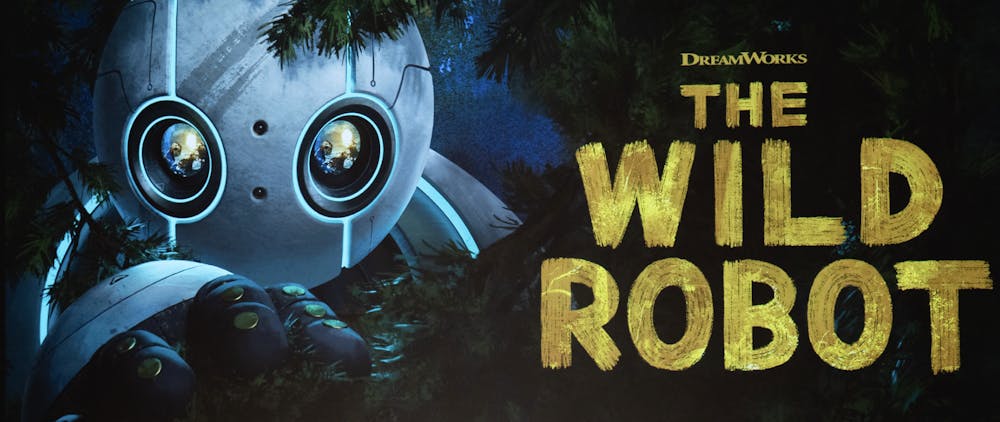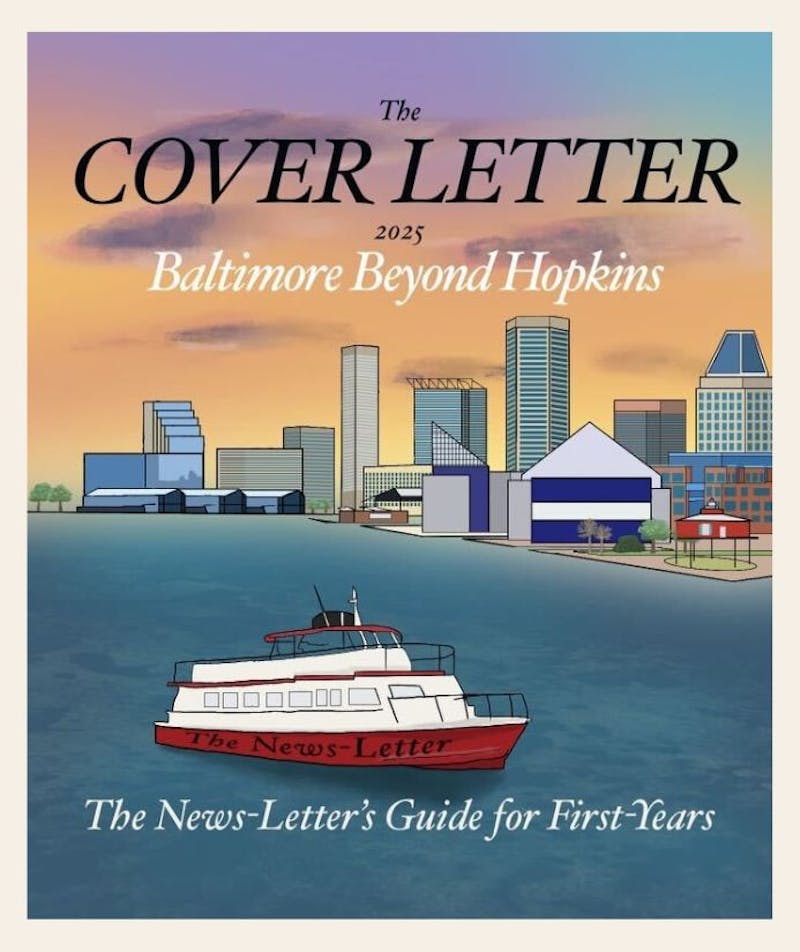Adapted from Peter Brown’s novel of the same name, The Wild Robot breathes new life into the book’s well-loved characters with a style that feels true to childhood fantasy. Its combination of majestic worldbuilding and heartfelt characterizations beautifully fleshes out Brown’s story of finding belonging in a foreign place.
The movie centers on Roz, a robot designed to improve the efficiency of its user’s life by catering to their every command. After a thunderstorm strikes Roz down from her delivery plane, she’s marooned on an island filled with wild animals. In her confusion, she accidentally crushes a goose nest along with its inhabitants; when she discovers one egg remaining, she takes up the task of raising the gosling Brightbill, who appears completely unpredictable to her computer-programmed mind.
To mirror Roz’s initial feelings of disorientation, much of the movie’s worldbuilding takes place through wide shots, each of which is filled with brilliant gradients and minute details. At Roz’s touch, a tapestry of monarchs dissolves to fill the screen. On the beach, a tidal wave of loops and whorls engulfs her from a crab’s-eye view. From the vantage of the island’s sequoias, she appears no larger than a pixel on the forest floor. Even though the island is a tiny patch in the middle of the ocean, it feels impossible to navigate every contour, and Roz’s isolation translates with full force.
As Roz comes to terms with her situation, the movie warms itself up with close-up shots, overlaying the characters’ 3D environment with a painterly 2D texture for a storybook effect. In contrast to Dreamworks’s more polished styles, The Wild Robot leaves raw edges and brush strokes that give the characters an organic familiarity. For instance, when Brightbill emerges from his shell for the first time, his feathers are drawn with dotted splatters, as if they’re brittle paint flecks that could snap with the slightest carelessness. No matter the panel, the animation feels like a labor of love; even during Roz’s brief walks through the forest, the beams of sunlight that come through the canopy have ragged edges that look like dust suspended in still air.
Along with the cinematography, the movie’s character development feels heartfelt and well-planned, with Roz’s robotic nature worn down over the course of many interactions. When the goose flock bullies Brightbill for not being able to fly, Roz takes him on her shoulder and begins running with him, much like a parent and child figuring out a foreign territory together. They’re forced to build a home far from the other geese and the two take turns laying sticks, with Roz lifting Brightbill up each time he finds a small twig to contribute. She and Brightbill navigate a conflicted relationship, but their found family is a consistent source of comfort through their mutual isolation.
With time, the two build a community of their own, made up of kindhearted animals who have also been shunted from mainstream society. Early in her motherhood, Roz runs from Brightbill out of annoyance, and she finds a similarly weathered opossum mother, whose children don’t stop spawning. After Roz’s leg wears down from teaching Brightbill to fly, a misanthropic beaver carves a replacement leg for her from oak. Each moment strengthens Roz and Brightbill’s foothold in their surroundings, emphasizing their ability to find an identity outside of social or natural expectations.
Though the movie’s emotional development is largely well-paced, it does build to a cliché climax for the sake of entertainment. The ending features Brightbill and Roz playing savior roles against the remains of human society, rising to acclaim as heroes within the animal community. This slightly undermines the development of the main plot, as it contradicts the original themes of finding belonging outside social norms. Instead, it might have been more fitting to see greater development between Brightbill and Roz, as their conflict feels largely resolved over the course of one flying montage.
Nevertheless, the movie’s feelings of acceptance and belonging shine most strongly. It’s a warm film that reminds viewers of the importance of the self with beautiful visuals and a gentle plot, and it is well worth a watch no matter your age.





